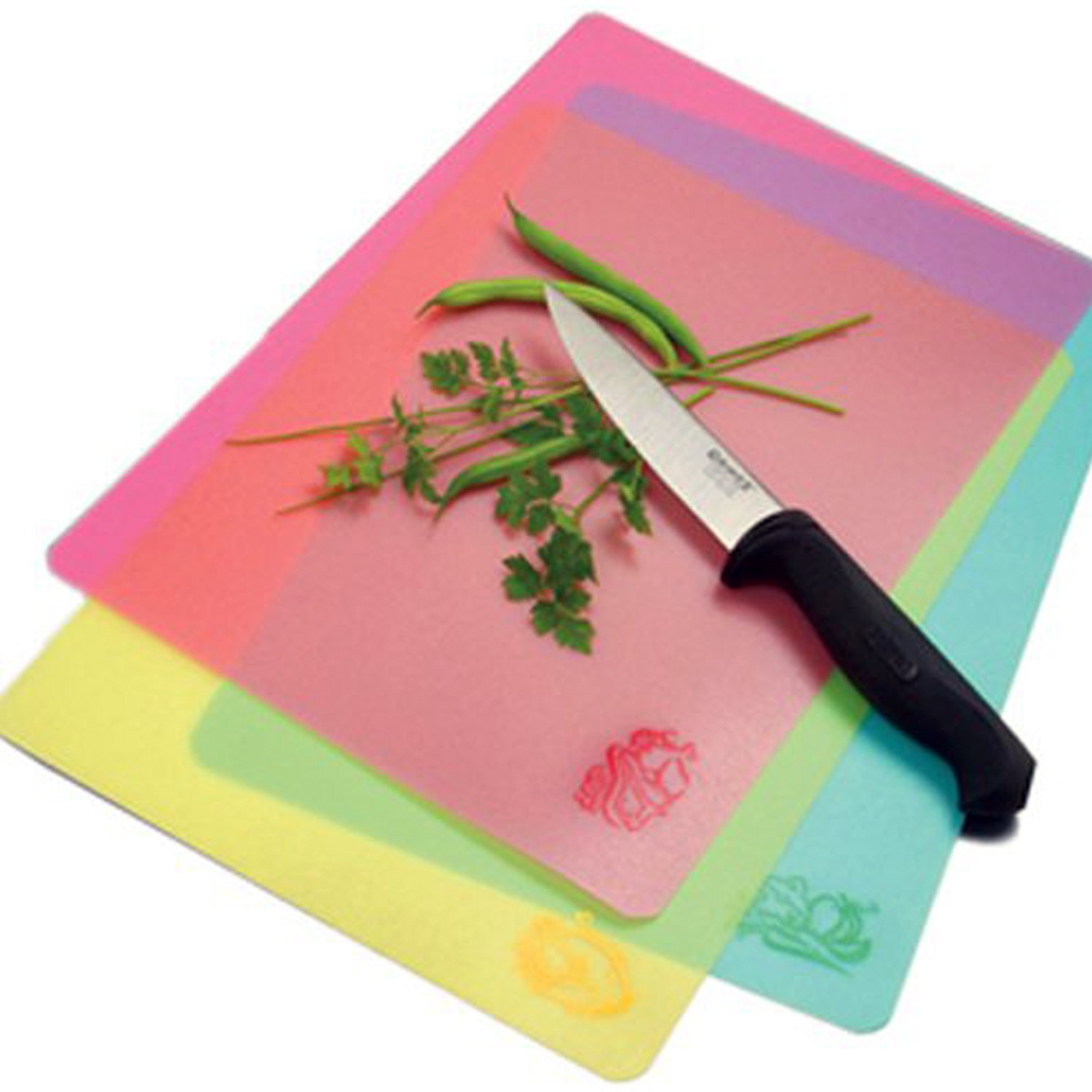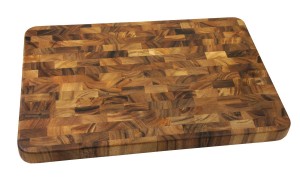

I think I’ve read nearly every possible argument on the subject of the best cutting board material in the years I’ve been cooking and I am still not sold that there is just one best material for cutting boards. I’ve come to the conclusion that each material has it’s own benefits and drawbacks and as such have a few different materials in my own kitchen. First, let’s look at the available materials for cutting boads.


Wood cutting boards, sometimes called “butcher block” cutting boards, have been highly regarded for quite some time as a sign of quality and professionalism. I agree that they look wonderful and definitely add a sense of elegance when compared to plain old plastic cutting boards. Most people though, don’t know that there are different types of wooden cutting boards but when you find out more about the different types it makes perfect sense.
There are a number of different types of wood, so naturally there can be many different types of cutting boards made from the various wood types. When choosing a wooden cutting board consider the type of wood that you want for the board and not just the fact that a wooden cutting board is not plastic. In my opinion, the primary consideration of the type of wood to use is the durability of that wood. If you are selecting a softer wood (pine, for example) then your cutting board will wear much quicker and also show cut marks much more. If you select one that is very dense such as Ironwood, it may be much heavier and harder on your knives but last much longer.
End grain cutting boards consist of many smaller pieces of wood laminated together and can look like a checkerboard like the first picture on this page. The grain in the wood runs from the top surface of the cutting board to the bottom surface. Generally speaking, end grain wooden cutting boards provide a harder cutting surface due to the direction of the grain against the knife blade. This can translate to a longer lasting cutting board. Edge grain cutting boards like in the picture to the right, are essentially strips of wood attached side by side for the length of the cutting board. Butcher block counter tops are primarily constructed in a similar fashion. The picture to the right shows a large contrast between the wood finishes, but many times they use the same wood and finishing on each strip making them hardly distinguishable other than the wood grain.
>> Explore Wooden Cutting Boards
>> Explore Bamboo Cutting Boards
Wooden and bamboo cutting boards need to be cleaned and maintained in a way that preserves the natural qualities of the material and won’t warp the cutting board. I will cover this in detail in a separate post but wanted to summarize the work required here for potential shoppers to consider before making a purchasing decision. In a nutshell, here’s what’s required for cleaning and maintenance of wooden cutting boards (much of this will apply to bamboo also) in no particular order.
All this being said, I have a wooden cutting board I completely neglect and it has not exhibited any major issues other than some very slight warping that I can live with. I have not cleaned it in the dishwasher though – that’s a big no-no!
One of the major drawbacks of plastic cutting boards are their lack of durability long term. Once a plastic cutting board is scored or gouged significantly, it no longer provides any inherent benefits over a wood cutting board, and may even harbor more bacteria than a comparable wooden cutting board. Plastic cutting boards do, however have some advantages:
>> Explore Plastic Cutting Boards
What else can I say here? If you choose to cut on one of these surfaces then I doubt anything I will will say in addition to the above will convince you that these super hard materials are not suitable for actual cutting use.
That being said, from a display perspective, a piece of stone, steel or glass can be very elegant for serving cheese, charcuterie or even entrees and may be something you want to consider in your kitchen.
In summary, I would call these things a cheese board or serving piece more than an actual cutting board.
In my opinion, there is no single best material for a cutting board. Every material has its own strength and weakness and should be utilized in a way to take advantage of their strengths.
Here is what I have in my kitchen:
What kinds of cutting boards do you have in your kitchen? Are you satisfied with just one?
If you've just received a new set of stainless steel cookware (congratulations!), or bought yourself…
The French have a very well known reputation for producing exquisite and incredibly sophisticated foods…
The mighty blender is one of the most versatile items available for the home kitchen.…
With a new year comes the perfect opportunity to pepper our kitchens with new gadgets.…
Sometimes I'm an idiot. Like this time for example, when I left the nice little…
There's something elevated about having your own espresso machine at home. No matter how fancy…
View Comments
I used to work in restaurants and had those yellowish rubber type cutting boards, but didnt look so great even when new . Great for knive edges though ..now of any newer morden looking ones that show better ? Thanks